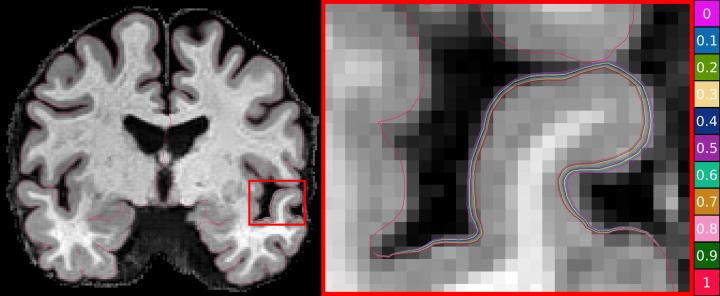
CSIRO researchers use machine learning to advance Alzheimer’s research © Copyright CSIRO Australia, 2023-02-01
Researchers from CSIRO, Australia’s national science agency, and Queensland University of Technology (QUT) have developed a new technique for measuring brain atrophy in neurodegenerative diseases, such as Alzheimer's disease, using advanced machine learning techniques and synthetic MRI images.
Alzheimer’s is the most common form of dementia, accounting for 60 to 80 percent of cases. One of the ways of measuring its progress is via MRI images that show cortical thinning. However, measuring changes in the thickness of the brain's cortex can be challenging as changes are often in the sub-millimeter range.
Before this breakthrough, a lack of clinically accurate ground truth datasets meant researchers could not evaluate the sensitivity of machine learning techniques to detect small atrophy levels. The only way to obtain ground truth measures of cortical thickness was by studying post-mortem brains. However, this method is inaccurate because brains begin to shrink immediately after death, resulting in inaccurate readings.
The CSIRO and QUT researchers used machine learning to produce a set of artificial MRI images of brains with predefined signs of neurodegeneration in the cortex region. This new technique allows researchers to compare the performance of different methods used to measure cortical thickness, helping them pick the most effective tool for assessing disease progression.
This technique can determine whether a method can detect changes in thickness of just 0.01 millimeters, testing the sensitivity of methods to a minuscule level. According to Filip Rusak, research scientist from CSIRO’s Australian e-Health Research Centre, cortical atrophy, thinning of the brain’s cortex, can start up to ten years before clinical symptoms of Alzheimer’s appear, and extremely accurate methods are needed to observe these signs in brain images when they begin to appear.
The findings, published in Medical Image Analysis, have already had international impact, and Michael Rebsamen from The University of Bern in Switzerland stated that the innovative benchmark from CSIRO closes a gap and marks an important milestone for evaluating cortical thickness methods. The technique can be applied to research in any brain disease that involves neurodegeneration, providing a significant step forward in understanding dementia and other debilitating brain diseases. Additionally, it could potentially be used to predict the level of cortical degeneration a person can expect over time.
Dr. Rusak notes that all of this technology happened on the back of commonly used and relatively inexpensive MRI images, and the synthetic dataset images have been made publicly available so clinicians and scientists can use them to conduct their own assessments of cortical thickness quantification methods.
